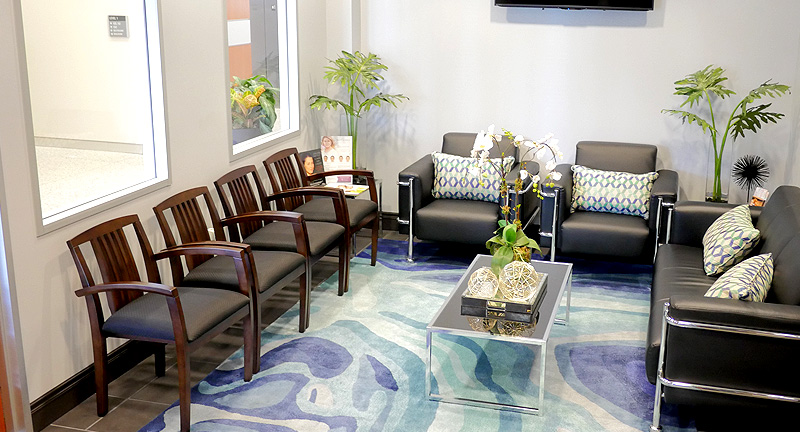What can I expect on my first visit?
After diagnostic tests are performed, the surgeon will decide on the appropriate treatment plan. You will be explained about the specific procedure you require, and your surgeon will also help you visualize the benefits and risks associated with the surgical procedure.
How is minimally invasive surgery beneficial?
One of the main reasons why minimally invasive surgery is beneficial is that it reduces the postoperative discomfort and leaves a smaller scar.
Laparoscopy was one of the first types of minimally invasive surgery performed through one or several small incisions, using tiny cameras, small tubes, and multiple surgical instruments. Robotic surgery is another type of minimally invasive surgery. It offers a magnified 3-D view of the surgical site and helps the surgeon perform the operation with exact precision, control and flexibility.
Nowadays, minimally invasive procedures are chosen whenever surgical treatment is advised and the patient is a good candidate because minimally invasive procedures offer several benefits to the patients including:
Should I discontinue taking my medications prior to surgery?
You will probably need to discontinue some medications that you take daily. The surgeon will inform you about the medications you need to stop taking before a surgical procedure and will specify the time at which you can resume taking these following surgery.
What are the possible risks and complications of undergoing a surgery?
The surgeon will provide information about the possible complications such as bleeding and infection, and other potential side effects that may occur after the procedure. The methods of pain management after the procedure will be discussed with the patient. If any of these complications arise, immediate medical attention should be sought.
What conditions do general surgeons treat?
Dr. Khoury provides advanced, comprehensive surgical care, and are able to manage both routine and critically ill patients. Advance Laparoscopic Robotic surgery for colon cancer, diverticulosis, laparoscopic Robotic reflux-hiatal hernia repair, laparoscopic Robotic inguinal, ventral, incisional hernias. Small and large bowel obstructions surgery. He performs minimally invasive appendectomies, single site Robotic Laparoscopic cholecystectomies, disorders of stomach surgery, splenectomies, thyroidectomies and parathyroidectomies. Breast cancer screening and surgery. He also performs upper endoscopy and colonoscopy.
What do minimally invasive and tissue-sparing techniques involve?
In contrast with the long incisions made while performing a conventional open surgical technique, several tiny cuts are made to insert special surgical instruments during the minimally invasive procedure. A common minimally invasive surgical technique is laparoscopy, which involves the insertion of a miniature camera or an endoscope into the abdomen. Robotic surgery is a novel technique in which the surgeon utilizes computer imaging for guidance of the movements of the surgical instruments that are attached to the robotic arms.
What documents do I need to carry when I come for the first appointment?
You should bring along your insurance card, a referral from your primary care physician, all the medical records pertaining to your condition such as X-ray reports, CT, MRI scan reports, laboratory test results, a list of current medication taken, and, if relevant, the report of the previous surgical procedure.
When is gallbladder removal surgery indicated? How is it performed?
The surgery is recommended when gallstones cause biliary colic or acute pain in the abdomen because of spasm or obstruction in the cystic or bile duct. The surgical removal of the gallbladder is termed, ‘cholecystectomy’, and is performed using a laparoscopic technique or traditional open surgery. The laparoscopic technique is the most commonly used for simple cholecystectomy. During this procedure the surgeon will make several tiny incisions in the abdomen. Hollow tubes will be inserted through these openings. Surgical instruments and a lighted camera are placed into these tubes. The abdomen will be inflated with carbon dioxide gas for better visibility of the internal organs. The gallbladder is then removed and the small incisions are closed using sutures, surgical clips or glue. The entire procedure may last for about 1-2 hours.
In open cholecystectomy the surgeon makes an incision of about 6 inches in length, in the upper right side of the abdomen. The incision cuts through the fat and muscle to access the gallbladder. Then, the gallbladder is removed, and ducts are clamped. The incision is then closed with sutures. This procedure may take about 1-2 hours.

SKS Surgical Group – Your Health. Your Surgeon
We are bound to provide our patients with accessible, comprehensive and accurate information. Our highly experienced doctors and specialists have answered the most frequently asked questions in order to facilitate your understanding of the most common medical problems and explain what the diagnostic and treatment procedures performed at SKS Surgical Group entail.
Disclaimer:
We do not assume responsibility for the use of the provided information or its interpretation. Our efforts are towards providing current and reliable information; however these should not be considered, or used as a substitute for diagnosis or treatment.





